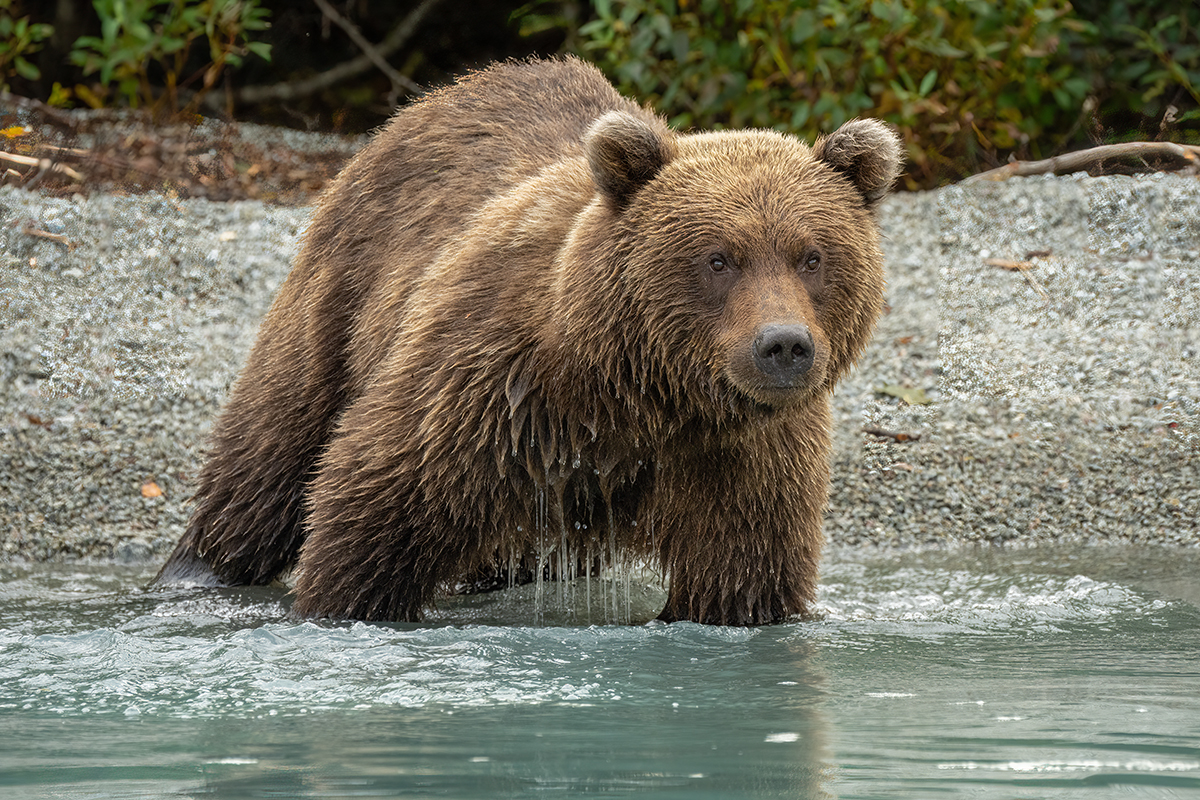Game-Changer in the Alaskan Wild
David Akoubian’s Tamron 50-400mm VC VXD ultra-telephoto zoom opens up creative possibilities on the Last Frontier.
Share the article:
More Photo Tips | Video Gallery | Photo Gallery | Enewsletter sign-up
By Jenn Gidman
Images by David Akoubian
At the end of August, David Akoubian headed up north to Crescent Lake, located in Alaska’s Chigmit Mountains, to photograph the black and brown bears that frequent the shoreline there to feast on silver and sockeye salmon before the long winter. “We also took a couple of scenic boat trips on Kachemak Bay, on the southwest side of the Kenai Peninsula outside Homer,” he says. In his gear bag to capture all of the action: the Tamron 50-400mm Di III VC VXD ultra-telephoto zoom lens.
“With vast landscapes like those in Montana, Wyoming, or Alaska, you don’t often need a focal length much longer than 50mm, so the 50-400 is perfect on the wide end for landscape photography,” David says. “I love that I was able to get more of the environment behind the bears I photographed into the image. The 400mm end of the lens allowed me to zoom in on the bears without getting too close and interrupting their activity, or on details in the landscape. With the 50-400’s maximum magnification ratio of 1:2 (half-macro) and a minimum object distance of 9.8 inches at 50mm (10.6 inches at 70mm), I was able to get super up close to some of my subjects, like the aspen leaves and flowers I saw there. To top things off, this lens is compact and lightweight, and I was blown away by its edge-to-edge sharpness.”
The bears in Alaska are somewhat different than bears you might encounter in the contiguous United States. “In the Lower 48, you wouldn’t get within 25 or 50 yards of a grizzly,” David says. “In Alaska, if only I had a dollar for every time a bear walked up and smelled my arm. It’s unnerving at first, but you get used to it. That’s where the 50mm end of the lens came in especially handy—if I wasn’t able to go that wide, I wouldn’t have been able to get the bears in my frame when they suddenly wandered close. They were sometimes just 10 feet in front of our boat.”
Strict food guidelines at Bear Mountain Lodge, where David stayed, help keep the bears relatively human-friendly. “You can’t bring any edible items in with you, and if you do, they get locked right up in a special refrigerator,” he says. “The bears are strolling all around the camp; you could step out your door and see a bear eating grass in front of your cabin. The officials there don’t want the bears associating humans with food. That way, they don’t go up to people looking for a handout, and you simply become just another part of the landscape.”
Read on to see how David used the 50-400mm lens on his most recent Alaskan adventure.
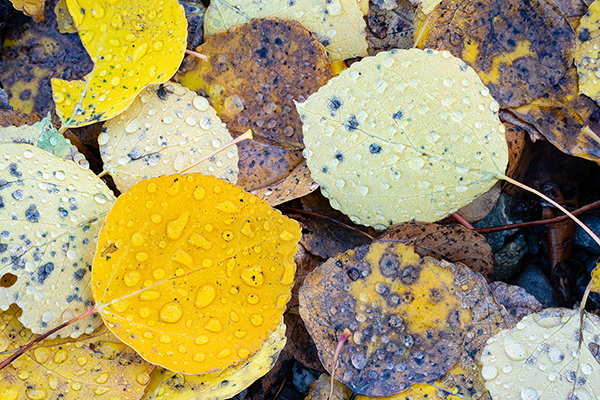
50-400mm (97mm), F/16, 1/5 sec., ISO 100
Click image to view larger
These are the aspen leaves I mentioned earlier. With these particular specimens, what I liked was the repetition of the patterns that were almost the opposite of each other, as well as the contrast of the colors. It divided the frame diagonally for me and balanced the image. Of course, I’m always looking for raindrops or dewdrops on flowers and plants, so this was a perfect photo opp.
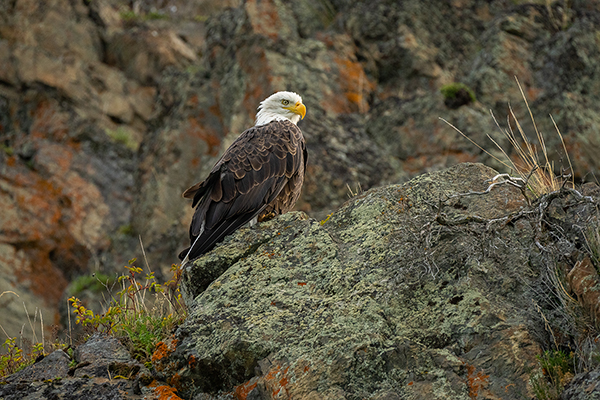
50-400mm (305mm), F/8, 1/1000 sec., ISO 3200
Click image to view larger
We were passing by the cliffs in our boat and a guy said he’d seen an eagle up near the rock line when he’d been there the week before. As he was talking about it, I looked up and there the eagle was. It just sat there and never moved. I set my camera to “bird eye focus,” so it could find in the frame exactly where the bird’s eye was. Even with the boat rocking, that autofocus stayed with the bird and kept everything sharp. The rock in the foreground that the eagle was perched on was parallel to us, so I was able to get the bird sharp all the way through, then just have the background softly drift off so I could achieve that separation.
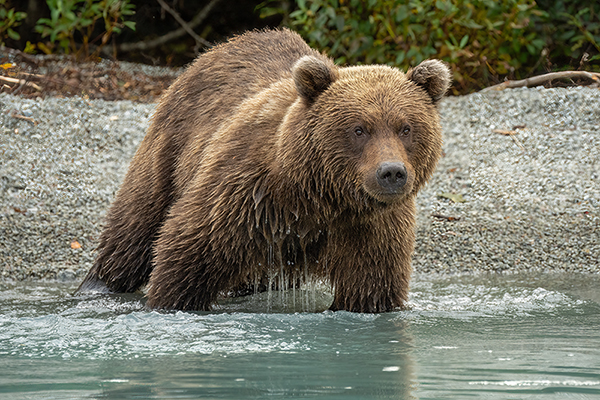
50-400mm (339mm), F/8, 1/500 sec., ISO 1250
Click image to view larger
When we encountered the bears, there was a mother with her three cubs, though these youngsters were almost as big as their mom—300 pounds to 400 pounds each. The mother had a technique in which she would wade partway into the water and stand as still as possible, then suddenly dive underneath the water in her efforts to retrieve the fish carcasses at the river’s bottom. It was hard as a photographer to time when that dive would happen, because she was so fast. You wouldn’t think they could be, because they’re so big. This photo was taken between dives.
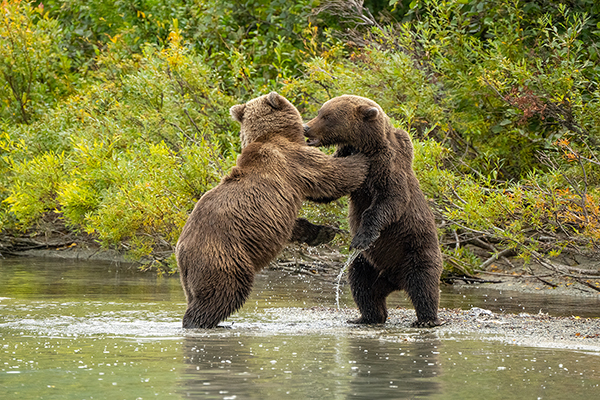
50-400mm (400mm), F/8, 1/1000 sec., ISO 4000
Click image to view larger
It’s part of the life cycle of bear cubs to spar and grapple, because it’s a skill they’re going to need to survive later on. And it’s both males and females who require this skill—the males to fight off other males, and the females to establish territory around themselves and their cubs. I took a photo of one of these cubs biting the tail of one of its siblings as it walked by, and then in the next set of frames, one of the cubs took off running and the other cub ran after it. When the second cub caught up to the first, this is the scene that unfolded in front of my camera.
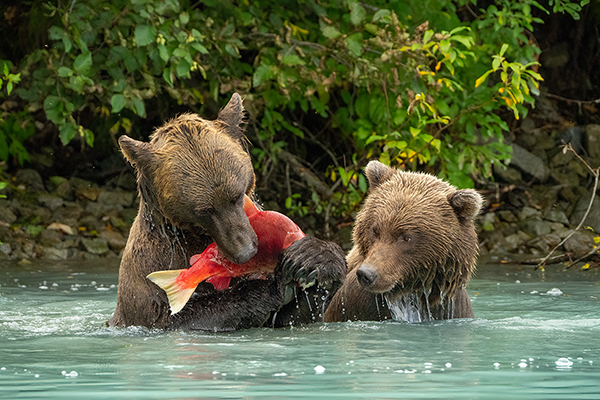
50-400mm (309mm), F/8, 1/1000 sec., ISO 5000
Click image to view larger
This image with the cubs and the large sockeye salmon was a bucket list photo for me, because of the contrast of that red fish against the brown bear. When the mother bear caught a fish, she would usually bite off the tail section for herself and then pass the best parts of the fish onto one of the cubs, which would then pass it onto the others. The cub here is waiting while its mom does her thing with the fish before sharing the spoils.
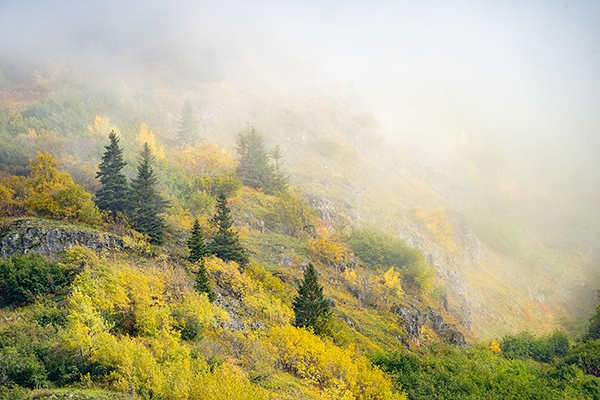
50-400mm (378mm), F/8, 1/100 sec., ISO 100
Click image to view larger
We were driving back to Anchorage and getting ready to head over to Seward when we came upon this beautiful misty landscape. The clouds were blowing through really quickly, and those five trees in the foreground formed that vertical line that carries you through the frame. The lovely contrast of the yellow in the foreground with the white of the fog in the background also drew me in.
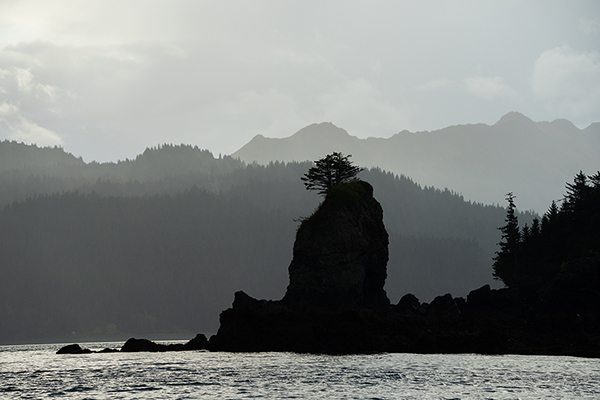
50-400mm (142mm), F/8, 1/1000 sec., ISO 800
Click image to view larger
For this silhouetted landscape in Homer, the light was very dark and moody that day. We stumbled upon this seastack with the tree on top and asked the boat captain to turn around so we could pass by it again. I wanted to float by so I could line up the seastack as the foreground element with those mountain ridges in the background. The weather conditions were ideal enough that I was able to keep some of the detail in the sky.
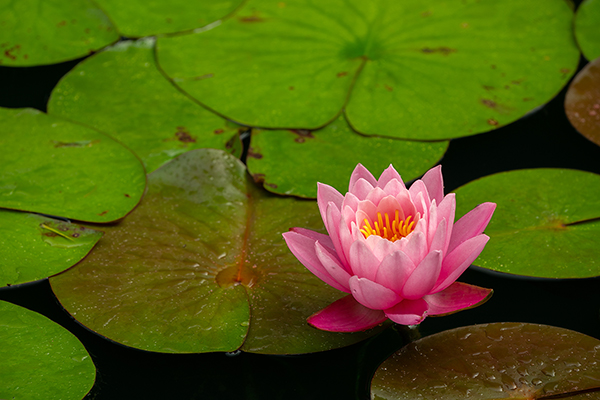
50-400mm (400mm), F/11, 1/13 sec., ISO 100
Click image to view larger
This is the one photo here that wasn’t taken in Alaska. I captured this in one of my favorite places to try out new lenses: Gibbs Gardens, a world-class venue not far from me in northern Georgia. I had the opportunity while I was there to really test the optics of the 50-400mm—the pixel-peeping I did illustrated to me just how sharp this lens was able to make the lily. I love the color contrast here between the pink of the flower and the green of the lily pads. I purposely placed the lily in the lower right “power point,” as it’s called: Everything in the image ultimately draws you down to that one spot, where you can finally rest your eyes. It’s subconsciously relaxing.
To see more of David Akoubian’s work, check out his Instagram or go to www.bearwoodsphotography.com.
More Photo Tips | Watch Videos | Learn More About Tamron Lenses | Photo Gallery
